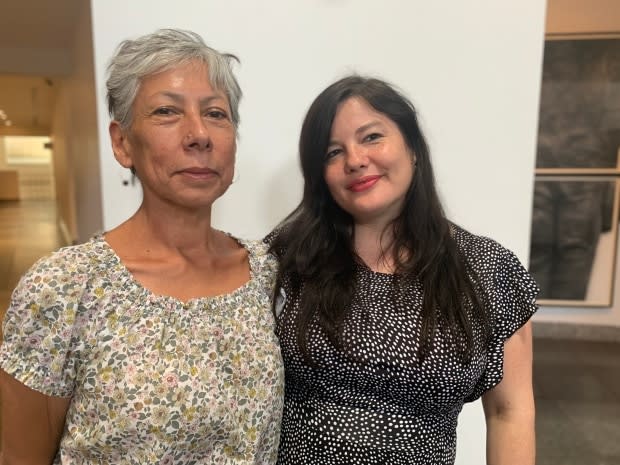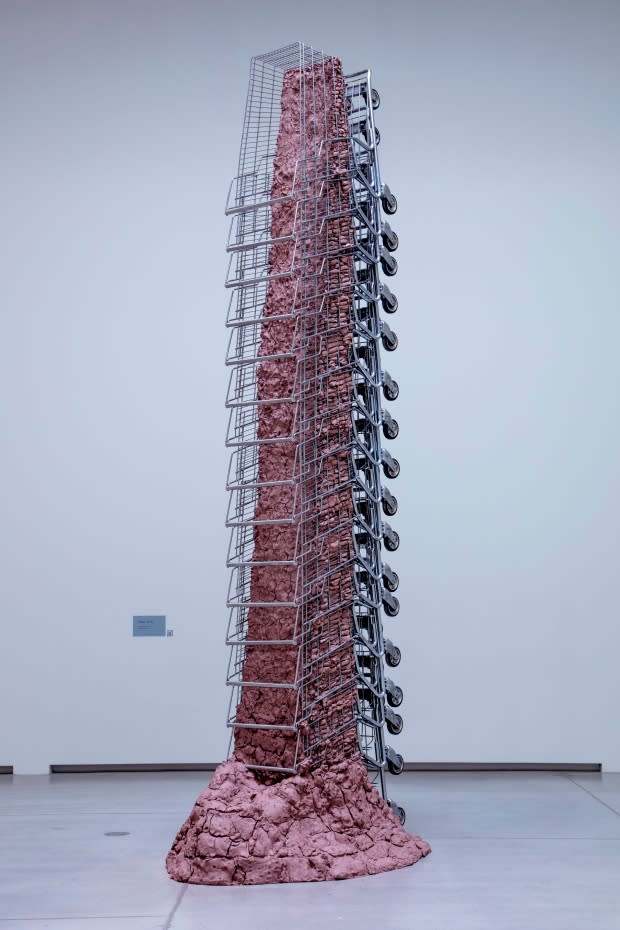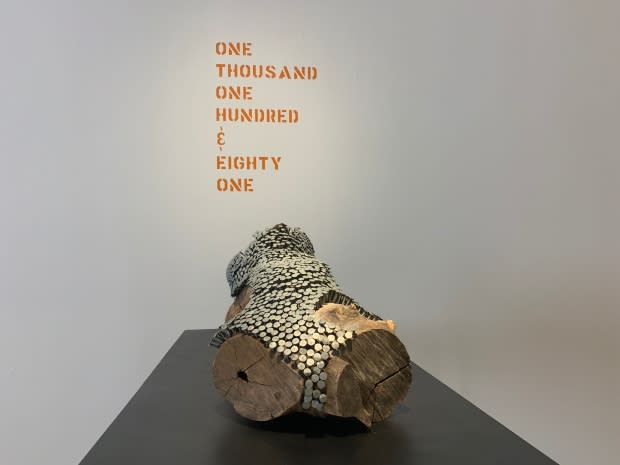'A catalogue of my life': Anishinaabe artist Rebecca Belmore on Facing the Monumental exhibition
The largest exhibition devoted to award-winning Anishinaabe artist Rebecca Belmore opens June 20 at Musée d'art contemporain (MAC) de Montreal.
First presented at the Art Gallery of Ontario (AGO) last summer, Facing the Monumental brings together a vast selection of sculptures, installations, photographs, and a compilation of 10 video documents of her performances since 1991.
"As an artist who has been working for 30 years, it's strange to think about all those works because really it is a catalogue of time, a catalogue of my life, how I think and how I am in the world," said Belmore.
Belmore, a member of the Lac Seul First Nation who currently lives in Toronto, addresses climate change, water access, land use, homelessness, the state of women's lives and violence against Indigenous Peoples through her work.

Her most recent piece Tower (2018) is a 4.6 metre-high tower of shopping carts and clay inspired by gentrification in cities like Vancouver.
"There's the homeless situation that's so in your face, and often in Vancouver homeless people will use shopping carts to transport their belongings," she said.
"I was thinking about how towers are going up and poverty is increasing, and this whole idea that land is real estate and real estate is expensive."
It was commissioned for the opening of the exhibition at the AGO last year.
"For me, Rebecca is one of the most important artists working today. Her work itself engages the issues of our time in a poetic and open way," said Wanda Nanibush, curator of Indigenous art at the Art Gallery of Ontario.

One of those issues is missing and murdered Indigenous women and girls.
The Named and the Unnamed (2002) and 1181 (2014) pay homage to the thousands of missing and murdered Indigenous women. For 1181, over the course of a day in Toronto, Belmore hammered 1,181 nails into a tree stump, each nail representing a police-recorded case of murdered and missing Indigenous women as per the RCMP's statistics in their 2014 report.
Another piece, sister (2010), was originally shown in the windows of Vancouver's Audain Gallery for women who walked by in the annual Feb. 14 women's march through the city's Downtown Eastside.
"I wanted them to see their sister in the window, whether she's having a great time at a concert, whether she's being frisked by the police.or whether she's flying away," said Belmore.
The works are timely given the national inquiry into missing and murdered Indigenous women and girls released its final report on June 3.

"It's a huge problem in this country. It's really important to speak out and speak up because otherwise people will just brush it away," said Belmore.
"Artists play a role in our communities. Artists are as valuable to society as a doctor, a lawyer or as a mechanic. Artists have to take their place within the community."
In conjunction with the exhibition, the MAC will host a two-day symposium in October focusing on the release of the inquiry's final report.
"Art, while it should speak for itself, it also speaks to a lot of other fields of knowledge. We can learn a lot from artists in those other fields," said Nanibush.
Facing the Monumental runs until Oct. 6 and will be free to the public on June 21 for National Indigenous Peoples Day.


